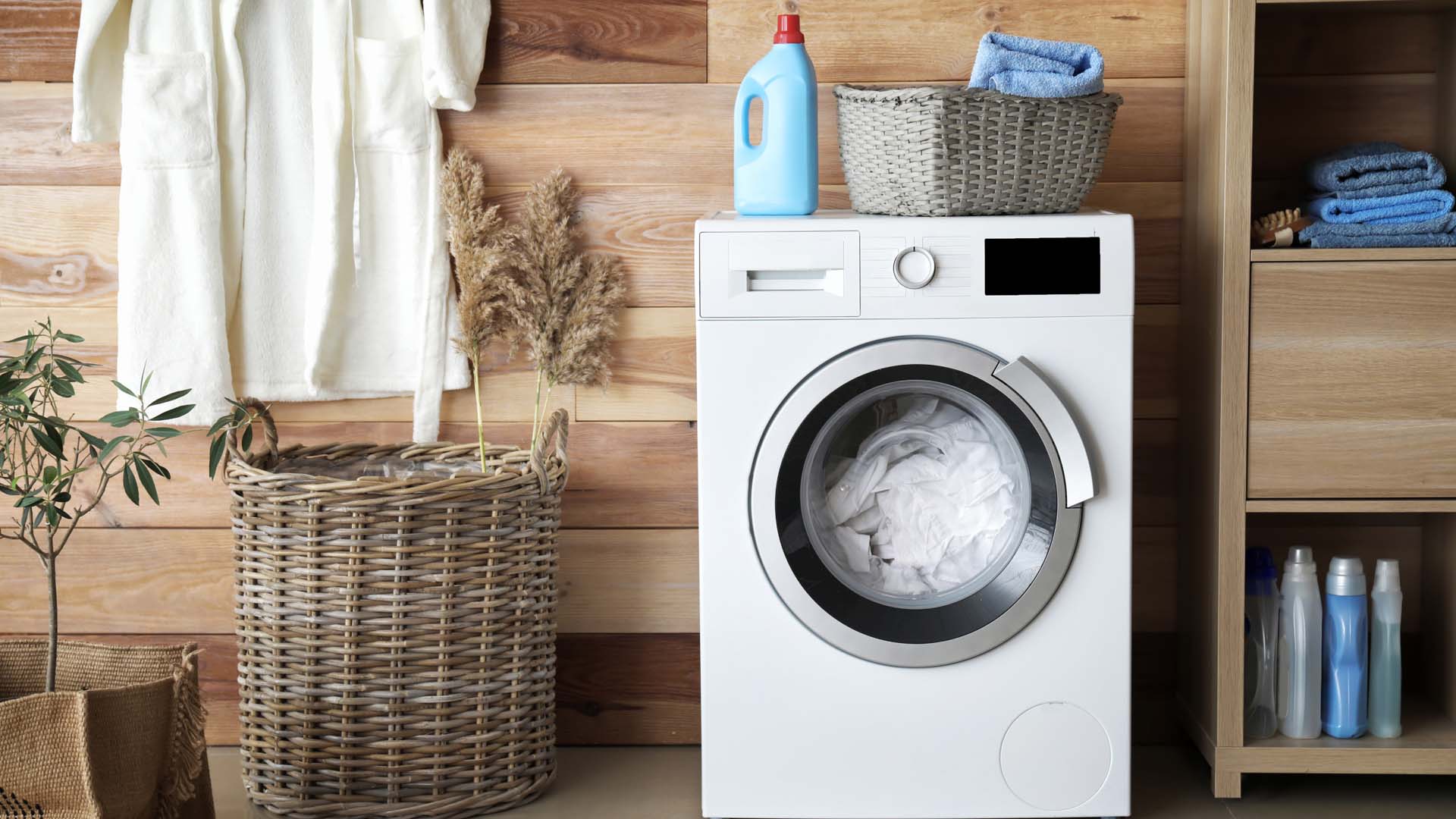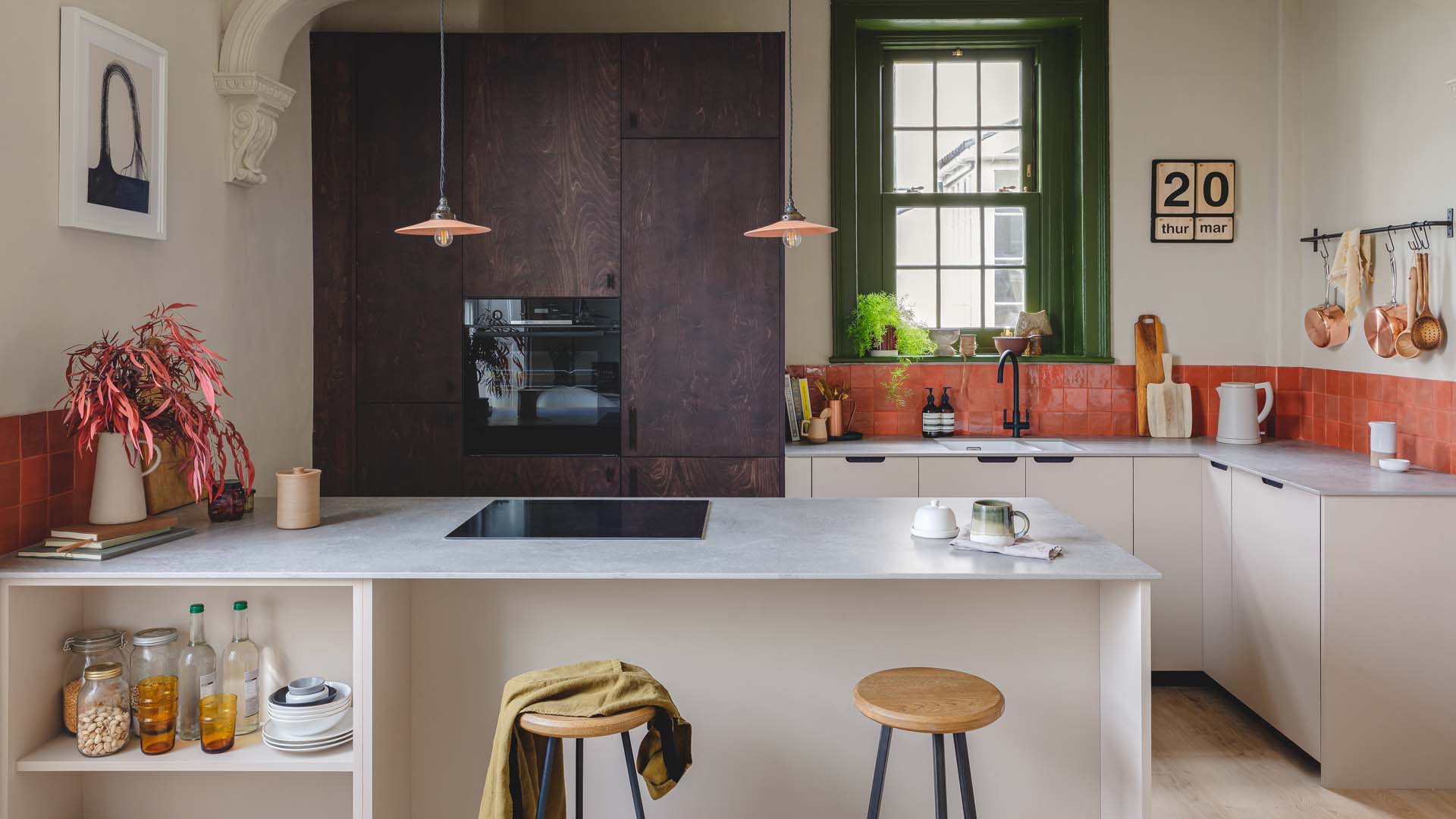Beat condensation and damp with our expert advice for a mould-free home
Waking up to moisture forming on windows and doors? These clever tips and savvy buys will banish drips and black spots.

Waking up to moisture forming on windows and doors? These clever tips and savvy buys will banish drips and black spots.

It starts as soon as the autumn chill sets in. With windows shut and laundry draped over every available radiator, trapped moisture condenses on surfaces, creating the perfect breeding ground for mould. And a less-than-perfect environment for you, your family and the fabric of your home.
According to the Government’s English Housing Survey of 2024, more than a million homes in England show signs of damp or mould, which can increase our risk of respiratory illnesses and exacerbate allergies like asthma.
Ventilation can help. But opening a window only works properly when the outdoor air is noticeably colder and your home is warm enough to encourage the moisture to escape. During those mild, in-between months of autumn and early spring, throwing open the windows might not lower humidity at all. In fact, without steady heating, it can do the opposite. And if you’re trying to limit how much you run the heating throughout the winter, things won’t get better.
And in all honesty, condensation in most homes is largely unavoidable. According to Hudson Lambert, mould expert at Dryzone: “The majority of moisture in the home is caused by occupants and their activities. Simply breathing, cooking and drying clothes will produce high levels of moisture vapour. In fact, one person adds around six litres per day of moisture to a home.”
With all this in mind, we’ve spoken to experts to find out how best to combat mound and mildew. Just a few simple daily routines will prevent damage to your health and – and your interiors as homes get warmer and wetter inside.

“As well as wiping down damp windows each morning and leaving them slightly open to help prevent moisture build-up, some people swear by adding a small blob of washing-up liquid to create a light protective coating,” says cleaning expert and TV presenter Lynsey Crombie.
“But not everyone is convinced by that trick – after all, the moisture has to go somewhere. And if mould does start to appear, one of the simplest and most effective remedies is plain white vinegar, which can help break down and remove mould without harsh chemicals.”
“Dehumidifiers remove excess moisture and reduce condensation before mould can develop,” says Chris Michael, CEO of air treatment company Meaco. However, not all dehumidifiers are created equal. “Using a dehumidifier without a proper filter in a home that already has mould can make the problem worse by circulating mould spores through the air,” he explains. “It’s essential to choose a model with integrated H13 HEPA filtration to capture airborne mould, offering vital added protection.”
And while you may think running an extra appliance is going to increase your energy bills, that’s not necessarily the case.
“Drier air is easier and cheaper to heat, and maintaining proper humidity not only helps to prevent mould but also helps prevent costly damage such as replacing plaster, carpets, paintwork or furniture,” Michael points out.
Shop now: Meaco Arete Two 20L Low-Energy Laundry Smart Dehumidifier, £279, Appliances Direct
If your budget won’t stretch to a state-of-the-art electric dehumidifier, you can alternatively opt for a cheap and cheerful homemade alternative. Rice acts as a natural desiccant and absorbs the moisture from the air before it has the chance to settle on your windowsills.
For around £1.25, you can pick up a kilogram bag of long-grain rice and use it to fill old socks. Take the socks and place them where moisture seems to form – on windowsills, in corners and by doors – and see them work their magic. You’ll want to monitor them quite closely, washing the socks and replacing the rice as they take on more water. But you can dry out the rice in the oven, so you can use it multiple times before buying new.

Lynsey Crombie has some top tips for minimising the moisture spread when you’re drying washing indoors:
“Extractor fans might not be the most glamorous part of a bathroom design, but they are one of the most important, especially during the colder, damper months,” says Darren Allison, design manager at Frontline Bathrooms. “When warm, moist air meets cooler surfaces, condensation forms almost instantly, which over time can lead to peeling paint, mould and damage to plasterwork.”
By keeping the air flowing, an extractor will stop the stale, moist air from settling and produce a 'breathing' effect in your home, sucking out moist air and replacing it with clean, filtered air. This will keep humidity down to a point where condensation can’t form, preventing mould growth and helping to maintain the integrity of your finishes.
“Modern fans are far quieter and more efficient than older models, with features like humidity sensors or run-on timers that ensure they operate only when needed,” explains Allison.
“They are also far more discreet, which makes it easier to integrate them into a stylish bathroom scheme. Prices start from around £40 for a simple wall-mounted fan, while a full supply and installation typically costs between £250 and £350. For that investment, the long-term benefit is a fresher, healthier space that stays looking good for longer.”
If you already own an extractor, now’s the time to give it a clean to make sure it continues to clear the air efficiently. “Start by turning the appliance off at the switch – if unsure, flip the circuit off for peace of mind,” says Catherine Green, cleaning expert at Smol.
“Unscrew or pop off the vent/fan cover, and vacuum any loose dust from the duct opening and cover, using the brush attachment. Wash the cover in warm, soapy water, use a toothbrush for slats and crevices, rinse and dry completely.
“Finally, wipe inside the visible duct with the vacuum again, replace the dry cover and test the fan,” adds Catherine, who also has a safety warning. “Don’t push water toward the fan motor, and if the motor is very dirty or noisy, get a pro to look at it.”

If you find that condensation has caused mould growth in your home, you’ll be looking for quick ways to eliminate it. A first instinct may be to reach for the bleach, but that alone may not do the trick.
Hudson Lambert suggests using a bleach spray to clean the stain and leaving it to dry overnight, but then using a biocidal or anti-fungal wash like Dryzone 100 Mould Sanitiser, £24.99 for 5 litres, to kill off any 'invisible tendrils' so that the mould cannot re-grow. The final step is applying mould-resistant paint over the wall you’ve just treated.
“You can keep the design of the room by mixing the anti-mould additive with any paint, and you’ll keep the mould away for at least three years,” he says.
Researching online, you may see recommendations for calcium carbonate dehumidifiers. These are passive devices that use calcium chloride pellets to absorb moisture from the air and 'trap' it in a separate chamber, helping create a drier environment, and reducing condensation and mould. Their size makes them handy for small areas like windows, wardrobes and cupboards, and they are super-cheap – usually costing a few pounds.
Even more affordable is kids’ chalk – the type you’d use on a chalkboard. Since it’s made of calcium carbonate, it works in the same way, absorbing damp and musty smells.
But look closely and you’ll see that these calcium carbonate dehumidifiers come with various product safety warnings, and may cause respiratory irritation and even damage to organs through prolonged or repeated exposure. Chalk dust, too, can cause irritation, so we’d treat these solutions with caution.
(Hero image credit: Getty)
Amy Cutmore has been writing about interiors for more than 20 years, harking back to the days when glossy red kitchens, toile de Jouy and rag rugs were all the rage, and everyone wanted a Changing Rooms makeover. You’ll have seen Amy’s work at Britain’s biggest homes titles, including Ideal Home, where she served as Consumer, Technology and Group Digital Editor. She has also edited or written for Homes & Gardens, Livingetc, 25 Beautiful Homes, Real Homes, Gardeningetc, Inside Readers’ Homes, Inspirations for Your Home, Country House & Home, Top Ten Reviews, Trusted Reviews and Country Life.
View author page

Whether you're looking for straightforward insurance or cover that's packed with extras, our home insurance has plenty of options for people over 50.


Learn how to avoid the most common vacuuming mistakes to ensure that your floors are spotless and free from allergens.










Create the perfect vista with our window cleaning tips.

Because a scale-filled iron can ruin your clothes.